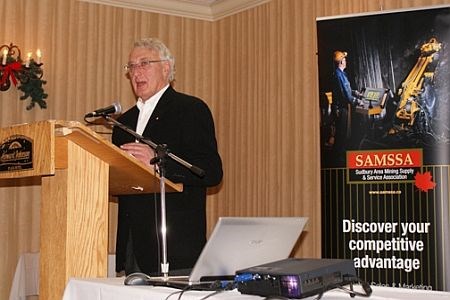After waiting three years, the first wave of funding for a study of Northern Ontario's mining supply and services sector has arrived that will ultimately propel the industry from obscurity to the forefront, said the head of a Sudbury manufacturers group.
Dick DeStefano, executive director of the Sudbury Area Mining Supply and Service Association (SAMSSA), says the money is needed to finally prove to the government of the value of this sector to attract both programming dollars and other mining-related companies to locate in Northern Ontario.
“We needed major funding to do a major study by a credible organization that would substantiate the very numbers I've been using for years,” said DeStefano, who is the driving force behind the study.
Ontario's North Economic Development Corp. (ONEDC), whose membership is comprised of municipal development offices across the North. ONEDC has identified the mining supply and service sector as the “foremost strategic development investment,” said DeStefano.
They are all partnering up with the Ministry of Northern Development, Mines and Forestry for a major study expected to get underway in August.
SAMSSA is part of this committee that successfully lobbied for $120,000 funding from the Northern Ontario Heritage Fund Corp. to undertake this comprehensive study of this massive support industry. More money is expected from FedNor.
According to previous SAMSSA figures, there are an estimated 521 businesses that cater to the mining industry employing between 12,000 and 15,000 from Kenora to North Bay. These companies contribute an estimated $9.6 billion a year to Ontario's economy.
SAMSSA and its committee members are currently looking for a consultant to start the study this summer. It will be an intensive and wide-ranging exercise with more than 400 interviews and could take as long as six months.
DeStefano said the study will provide the solid numbers and proof that mining suppliers are already a large and powerful force in the North.
Northern Ontario has the most mining service business in Canada after Toronto and Vancouver; however, Northern Ontario is the only area that is primarily made up of local industries, he added.
DeStefano said the major mining producers receive government support, but that's not the case with their suppliers. Supporting the service companies leads to a greater and more diversified regional industry sector that could potentially expand their business beyond the borders of Ontario.
“We now need to move forward with larger projects that can influence the federal government and help the federal and provincial governments develop programs specifically aimed at the supply and service industry, not the mining industry – and that's a huge shift.”




